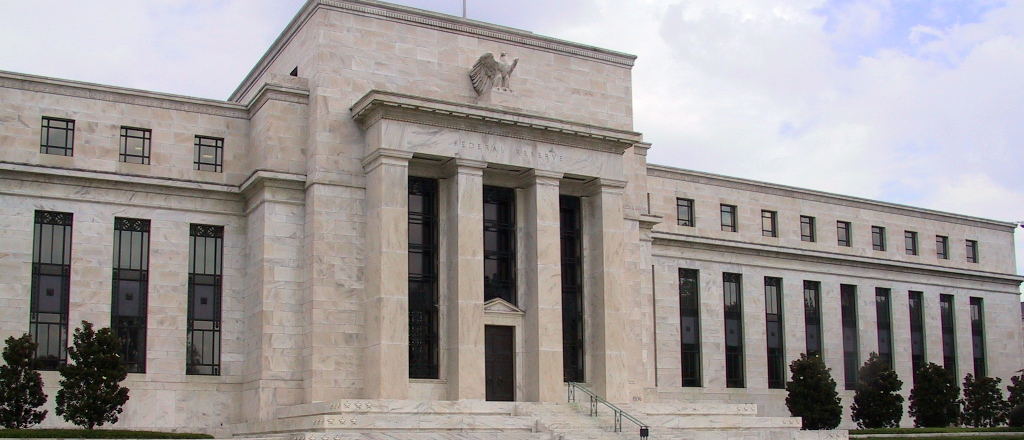On Friday, May 9th, 2014, the Federal Advisory Council and Board of Governors of the Federal Reserve met for their quarterly meeting in Washington D.C. This meeting was historically held in secrecy until Bloomberg News “won” a Freedom of Information Act request under the Freedom of Information Law requiring the Fed to make the meetings minutes available to the public.
The Federal Advisory Council (FAC) is “composed of twelve representatives of the banking industry, consults with and advises the Board on all matters within the Board’s jurisdiction…” according to the Federal Reserve in “About the Fed / Federal Advisory Council.”
FederalReserveEducation.org (maintained by the Federal Reserve) breaks out the Structure and Functions of the Federal Reserve in an easily digestible format. It explains that the Federal Advisory Council is one of three “statutory advisory councils” and the the Board of Governors (also known as the Federal Reserve Board) is responsible for conducting the United States’ monetary policy, and among other functions “… exercises broad supervisory control over the financial services industry, administers certain consumer protection regulations, and oversees the nation’s payments system…“
On February 27th, 2014, it was widely reported that Janet Yellen, the new Federal Reserve Chairwoman, stated the Fed does not have the authority to regulate Bitcoin. Here is a C-Span video clip where Chairwoman Yellen tells Senator Manchin at the Federal Reserve Board’s semiannual report on monetary policy and the U.S. economic outlook for the year that “{Bitcoin is} payment innovation that’s taking place entirely out of the banking system…The Federal Reserve simply does not have authority to supervise or regulate Bitcoin in any way…”
Chairwoman Yellen did deflect some of the discussion by telling Senator Manchin that Congress should be asking what the “legal structure” should be. Indeed, Congressional Research Service issued an “under the radar” report late last year, “Bitcoin: Questions, Answers, and Analysis of Legal Issues.” The report specifically stated that Congress is interested in Bitcoin because of its effect on the ability of the “Federal Reserve to meet its objectives (of stable prices, maximum employment, and financial stability)” and discusses whether or not “Bitcoins {Will} Affect the Fed’s Conduct of Monetary Policy.”
Until the Federal Reserve posted May 9th’s Record of Meeting (PDF), the Bitcoin data produced by the Fed has been mostly academic in nature with the regional members publishing their own respective research (see table/timeline). The Federal Reserve Bank of St. Louis has been most aggressive in this regards, posting no less than six videos on Bitcoin on Youtube.
All of the Fed research to date has contained disclaimers such as “The views and opinions expressed here are my own and do not necessarily reflect those of the Federal Reserve Bank of St. Louis or of the Federal Reserve System,” as stated in David Andolfatto’s (Vice President of Federal Reserve Bank of St. Louis) March 31st Dialog with the Fed: Possibilities and Pitfalls of Virtual Currencies.
The May 9th Record of Meeting (PDF) is a national (as opposed to regional) component of the Federal Reserve System. The Federal Advisory Council can make recommendations to the Board that steer policy. There are no disclaimers here, though the Council’s influence can be limited. One infamous example of conflict was in September 1934 when the Council recommended that the Board return to the gold standard and was told that they were trying to involve themselves with matter that was “none of their business.”
The Connecticut Day reported on September 29th 1934 that:
“The federal reserve board caustically replying to a demand by the federal advisory council for the return to the gold standard, a balanced budget, and an end to monetary experimentation, yesterday told the council that such affairs were none of its business.”
There were seven items in the Record and Bitcoin was item number five and took up more than two and a half pages…or nearly 25% of the report. One could then assume that about a quarter of the meeting was discussion about Bitcoin. Why was a considerable amount of time discussing Bitcoin at this meeting, if Bitcoin is outside the realm of Fed policy? It’s possible that we are experiencing a similar tug of war from 1934 but this is purely conjecture on my part.
Frankly, how could they not discuss Bitcoin? Bitcoin may be the paradigm shift that Federal Reserve Governor Laurence H. Meyer forewarned about in his speech from 2001. Meyer explained what would happen if electronic money were to reach critical mass:
“A decline in the demand for currency… lower[ing] the monetary base and hence reduc[ing] the size of the Fed’s portfolio of securities. The size of the Fed’s portfolio, in effect, determines the seignorage the government obtains through the issue of the monetary base. To the extent that the demand for currency declines, the monetary base and hence the Fed’s portfolio would shrink, and the interest earnings on that portfolio would diminish…. The Treasury would lose seignorage even from the first dollar of substitution of e-money for currency. If the Fed were to lose so much seignorage that it could not cover its costs under current arrangements, it would have to look for other arrangements to cover its costs in a way that supported its independence.”
At the Fed meeting, it was asked first and foremost: “Does Bitcoin pose a threat to the banking system, economic activity, or financial stability?”
It plays down Meyer’s concerns by stating that:
“Systemically, Bitcoin’s nascency makes it more curiosity than threat. Its greatest near-term hazards are its avoidance of consumer protection measures and illicit use, both of which support increased regulation. Medium- to long-term effects could be more pronounced as the network self-refines and adoption increases…”
I was surprised to read the Fed’s admission that Bitcoin can be used as a tool for for the unbanked especially after World Bank connected CGAP issued its own report dismissing Bitcoin’s utility for financial inclusion:
“Bitcoin enables cheap international remittance to the developing world and the developed world’s ‘unbanked,’ expanding financial inclusion.”
Other favorable and interesting attributes mentioned in the Record include:
- Bitcoin does not present a threat to economic activity by disrupting traditional channels of commerce; rather, it could serve as a boon.
- Illicit applications are rampant but not endemic to Bitcoin; sovereign-issued currencies and other precious goods are similarly used.
And the Fed is pro Bitcoin regulation:
“Regulation is advisable; considerations include protecting consumers, addressing illicit use, and avoiding Balkanization.”
In this regards they recommend, “Regulatory oversight to ensure that exchanges invest in appropriate cyber and other security measures. This includes fully secure storage of Bitcoin wallets.”
If (?) the adjective “fully” in regards to “secure storage of Bitcoin wallets” means that an exchange must hold the private key of a Bitcoin wallet it does not address how this would even be possible with a decentralized exchange. Actually I’m not entirely certain what the Fed actually means by ”fully secure storage of Bitcoin wallets” (a Google search first)? Perhaps they mean secure storage of Bitcoin? If (?) they mean wallets then we circle back to the theory that they would require that an exchange hold a user’s private key. Not just semantics?
The Fed’s direct involvement in Bitcoin at a policy level is likely to be triggered by one of two events. The Fed notes that “Should adoption accelerate, banking could participate increasingly in Bitcoin fund flows, especially as multicurrency accounts proliferate and reputational concerns subside.” Moreover Bitcoin could develop into a “systemic contagion of instability.” This would make Bitcoin no longer as Chairwoman Yellen put it, “taking place entirely out of the banking system.”
If Bitcoin were to be regulated by the Federal Reserve we could see an amendment to 12 U.S. Code § 262 if regulators were to clearly define the purpose of the Federal Advisory Council as related to Bitcoin.
Federal Reserve Bitcoin Timeline
October 2013
St. Louis Fed: There Are Two Sides to Every Coin—Even to the Bitcoin, a Virtual Currency: “In this article, we describe the unique features of the bitcoin and explain how it works.”
November 12, 2013
Fed Chairman Ben Bernanke: Letter to Congress: ”Bitcoin and other virtual currencies may hold long-term promise…”
December 2013 (document actually created same day Ben Bernanke’s letter went out)
Chicago Fed: Bitcoin A primer: “Bitcoin solves two challenges of digital money— controlling its creation and avoiding its duplication—at once”…and quoting an economist: “…it represents a remarkable conceptual and technical achievement, which may well be used by existing financial institutions (which could issue their own bitcoins) or even by governments themselves…”
December 4, 2013
Former Fed Chairman Alan Greenspan “It’s a bubble…You have to really stretch your imagination to infer what the intrinsic value of Bitcoin is. I haven’t been able to do it…”
December 16, 2013
Richmond Fed: New Private Currencies Like Bitcoin Offer Potential — and Puzzles: “…unlike gold and silver, bitcoins have no nonmonetary use”…Quoting an economist “the value of any medium of exchange, and especially fiat money, ultimately depends at least partially on faith.”
January 2014
Cleveland Fed: A Little Bit on Bitcoin: “Bitcoin is the first digital currency to successfully simulate cash.”
February 27, 2014
Fed Chairwoman Janet Yellen: Monetary Policy Report “The Federal Reserve simply does not have authority to supervise or regulate Bitcoin in any way.”
March 31, 2014
St. Louis Fed: Bitcoin and Beyond: The Possibilities and Pitfalls of Virtual Currencies:
“A virtual currency with zero intrinsic value and no legal backing.”…”Well-run central banks should welcome the emerging competition.”
May 9, 2014
Addendum
Also See “Currency King Set to Battle Bitcoin” a Print Exclusive in Bitcoin Magazine Issue 18 which discusses the Giori Patent Application “System and Method for Providing and Transferring Fungible Electronic Money.”
The post Federal Reserve’s Bitcoin Policy Begins to Take Shape appeared first on Bitcoin Magazine.














